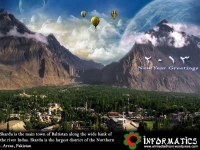The Power of the Intellect: Guiding the Evolution of European and Persian Painting
 A Special Lecture at The Museum of Fine Arts in Houston – May 16, 2010 3:00 PM
A Special Lecture at The Museum of Fine Arts in Houston – May 16, 2010 3:00 PM
Presented by scholar and collector Abolala Soudavar, Board of Trustees Accessions Committee, MFAH, 1986-94; author of Art of the Persian Courts; The Aura of Kings: Legitimacy and Divine Sanction in Iranian Kingship; and Decoding Old Masters: Patrons, Princes and Enigmatic Paintings of the 15th Century.
The fourteenth and fifteenth centuries were an age of courtly sophistication. In Europe, this period was characterized by an atmosphere of Shakespearean drama, from murders and vendettas to wars and crusades, chivalry and spectacular feasts. The colorful dukes of Burgundy dominated the center of power, their rule characterized by unprecedented courtly opulence, which contributed to the production of magnificent works of art, particularly paintings.
The fearsome Timur (known as Tamerlane in the West) subjugated a vast territory that stretched from Central Asia through part of the Indian subcontinent and Russia and encompassed Iran and Iraq. Artisans and craftsmen were spared from the massacres Timur left in his path. Instead, Timur gathered them in the capital city of his empire where they propelled miniature painting to such heights that it served as the standard of perfection and excellence for all subsequent schools of painting in Persia.
In this richly illustrated lecture, Abolala Soudavar shows that the evolution of painting in both Europe and Persia of the fourteenth and fifteenth centuries favored the production of enigmatic paintings layered with often hidden, intellectual references to the state of international relations and political rivalries, while at the same time underscoring the erudition and legitimacy of those who commissioned them.
Source: Payvend


